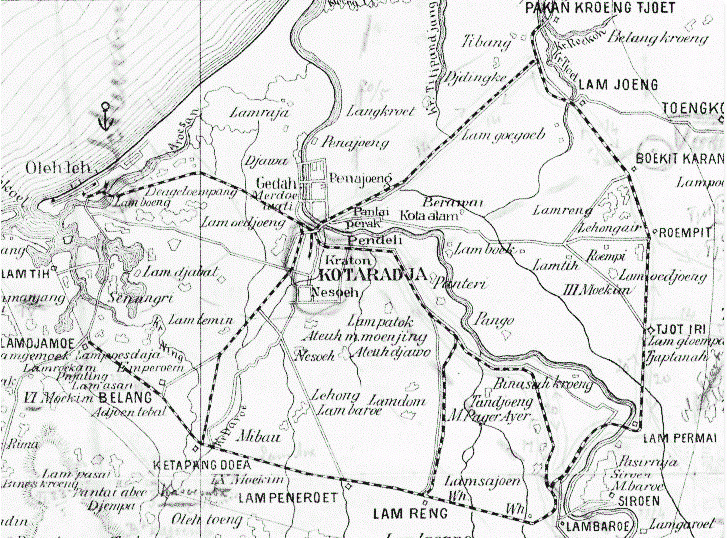
Atjeh Tram 1882-1896
The Atjeh Tramway came into being in the early 1880s when on the 1st January 1882 the then Governor transferred control of Railways from the military KNIL to a civilian Government Department known as Burgerlijke Openbare Werken (BOW), part of the government's civil service. As stated on the KNIL Military Railway page here this department was involved in plans for a narrow-gauge tramway system in the local area. Much later, in the 1890s there were plans for a line to link with Langsa on the east coast opposite Singapore. On the other hand the military also still needed the railway and also required an extension down the eastern coast. In 1884 agreement was reached that the 3' 6" line would be taken up and the trackbed used for the new-born Atjeh Tramway which although operated by the BOW was used extensively by the military for the defence system around Koeta Radja. Local (native) passengers were not permitted to use trains near or on the outer defensive circle.
The initial tramway was planned to connect settlements within about a 5km radius from Kotaradja with spur lines (straallijns) radiating out to an outer line encircling the southern and eastern segments for military defence purposes, see map below. Details of these lines follow with the year of opening:
In 1884 the first straallijn, about 4kms long, was opened between Kotaradja and Ketapang Doea. This gave a continuous line from Ketapang Doea to Oleh-leh once the military line had been converted to 750mm gauge on 8th June the same year. I have used the same spelling of names as the map.
On 1st August 1884 the second straallijn of about 7 kms opened between Kotaradja and Lambaroe, giving a continuous line from Lambaroe to Oleh-leh of 12 kms.
By this time the first order of rolling stock had arrived, consisting of 5 2-4-0T locomotives from Hanomag, 15 3-axle coaches and 35 4-ton freight vehicles.
In 1885 the last straallijn was completed with the line from Kotaradja to Lam Joeng and a short branch to Pakang Kroeng Djoet, totalling about 6 kms.
In the same year the first sections if the defensive ring were opened from Ketapang Doea north-westwards to Lamdjamoe via Belang and south-eastwards to Lam Reng via Lamara and Lam Peneroit, and also from Lambaroe to Lam Reng. In the same year a sixth 2-4-0T was received from Hanomag.
June 1886 saw the completion of the defensive ring with the opening of the section from Lambaroe to Lam Joeng via Lam Permai, Tjot Iri, Roempit and Boekit Karang. On 18th July the Demmenibrug over the Atjeh river was opened. This bridge was named after the Governor of Aceh, Henry Demmeni, who took on this position in August 1884. Also in 1886 a branch was laid to the military hospital at Pante Pirah.
On 28th January 1889 a bridge was blown up by terrorists who were trying to resist the Dutch takeover between Lambaroe and Lam Reng, and repeated attacks led to another straallijn link being opened between Lam Tehoe and Lam Reng in February 1890 with the Lambaroe to Lam Reng line not being reopened until 1st March 1891.
Although the tram network was built mainly for military purposes civilian passengers used some services but the locals were not permitted on the defensive ring, also known as beam lines.
1894 saw the arrival of two more locomotives from Hanomag bringing the total up to 8.
This portion of map from KITLV Leiden University Library shows the tramway lines as they existed at 1st March 1891, and until the end of 1896, with a total length of about 40 kms.

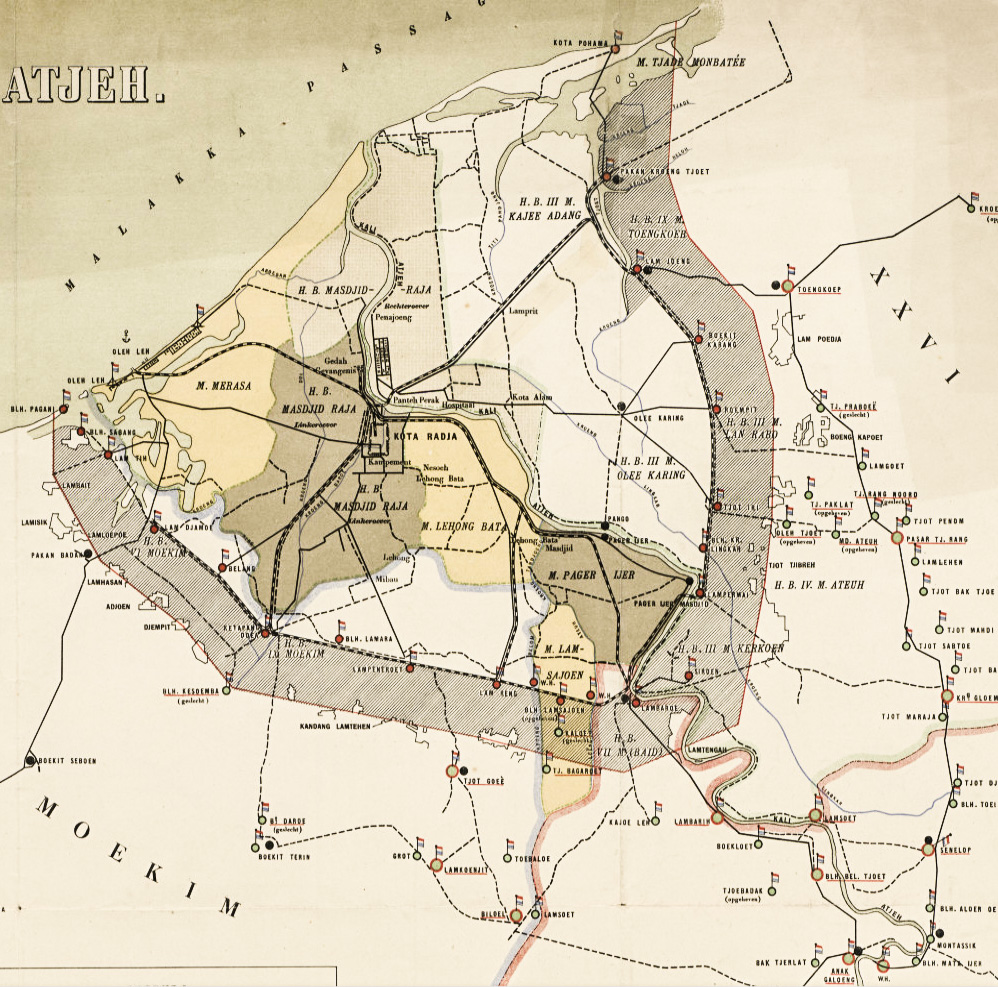
Above: This map show the relationship between the tramway and the defensive ring around Kotaradja.
Below: This picture almost certainly shows the Atjeh River Bridge opening on 18th July 1886. The locomotive is No 1, built by Hanomag as their number 1556 of 1883.
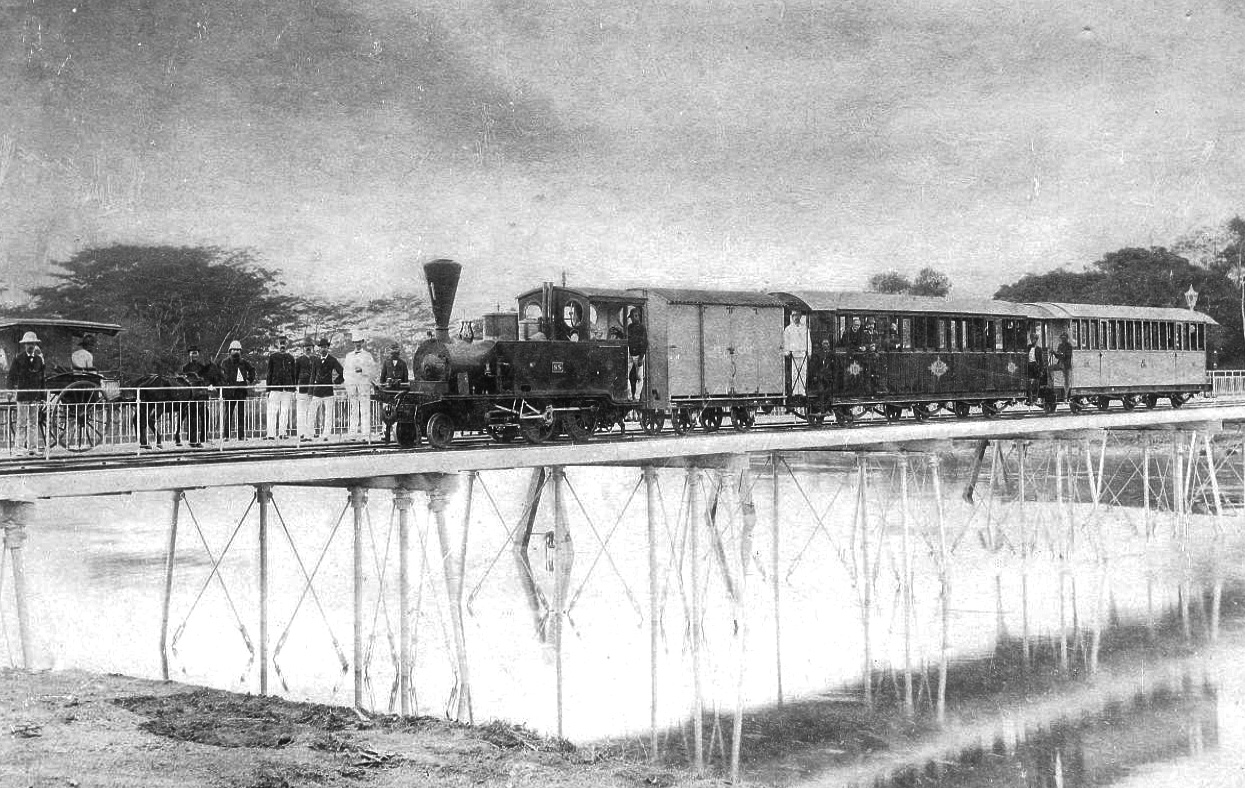
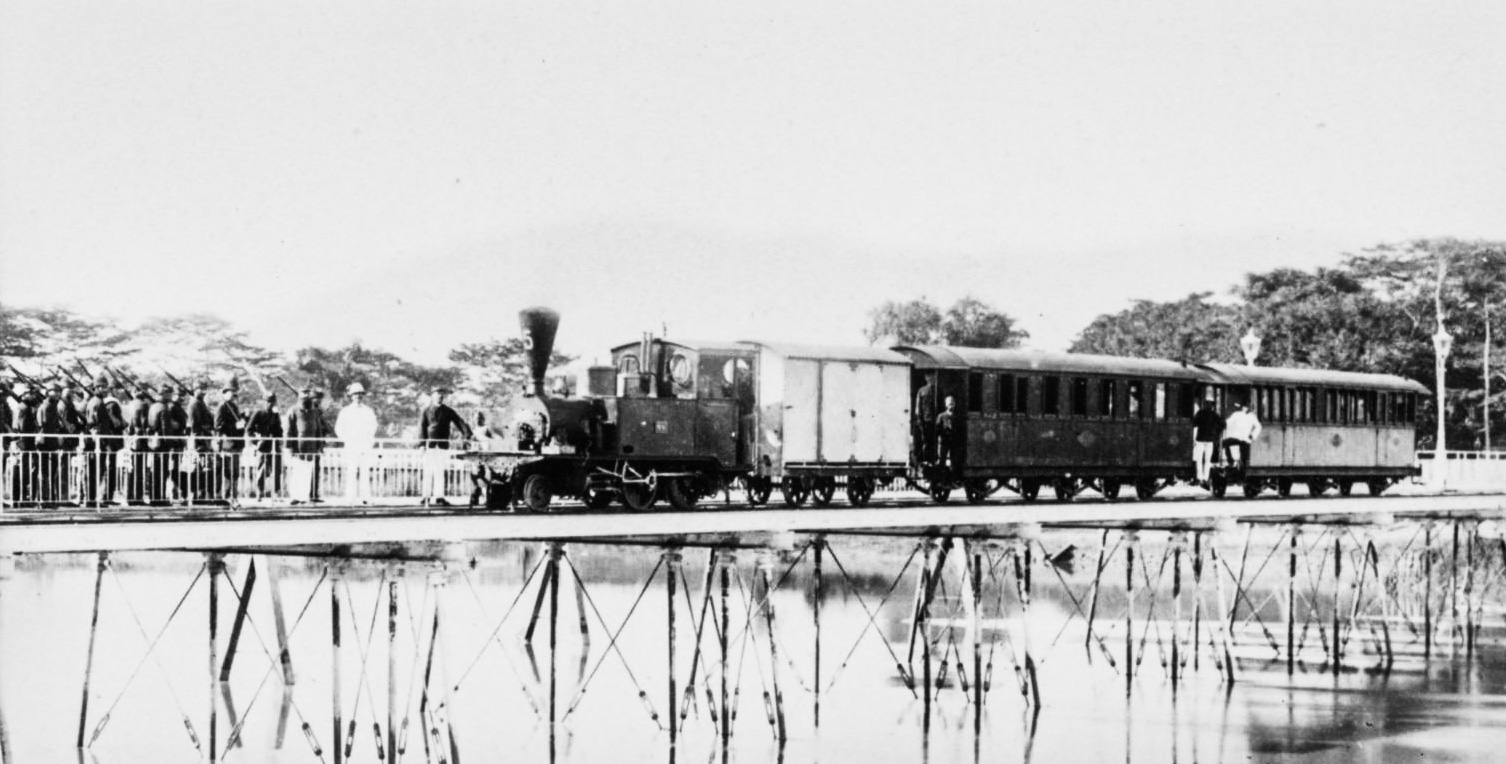
Another picture with a similar train on the same bridge with 2-4-0T No 5.
Atjeh Tramway (northern section) 1897-1903
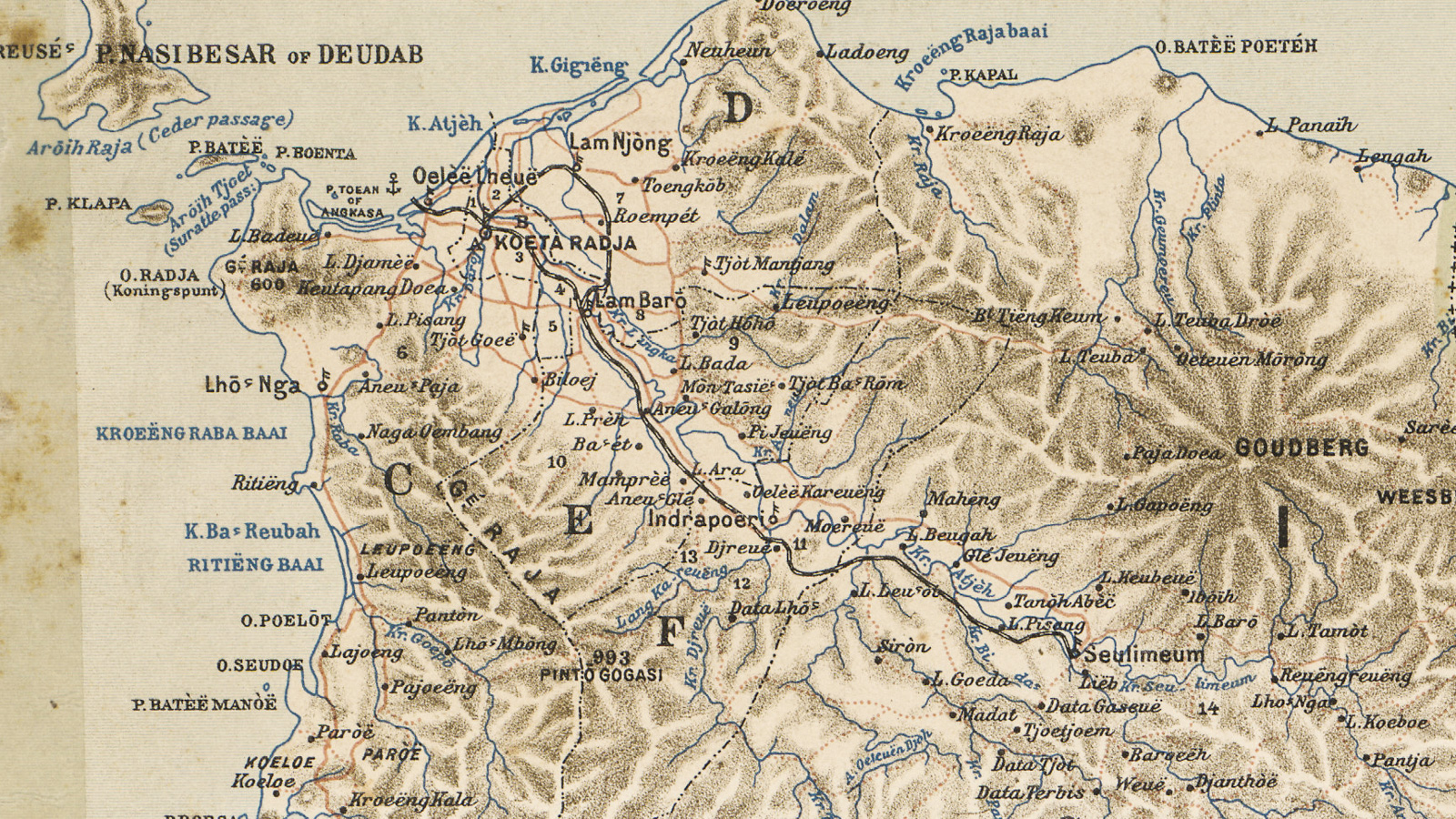
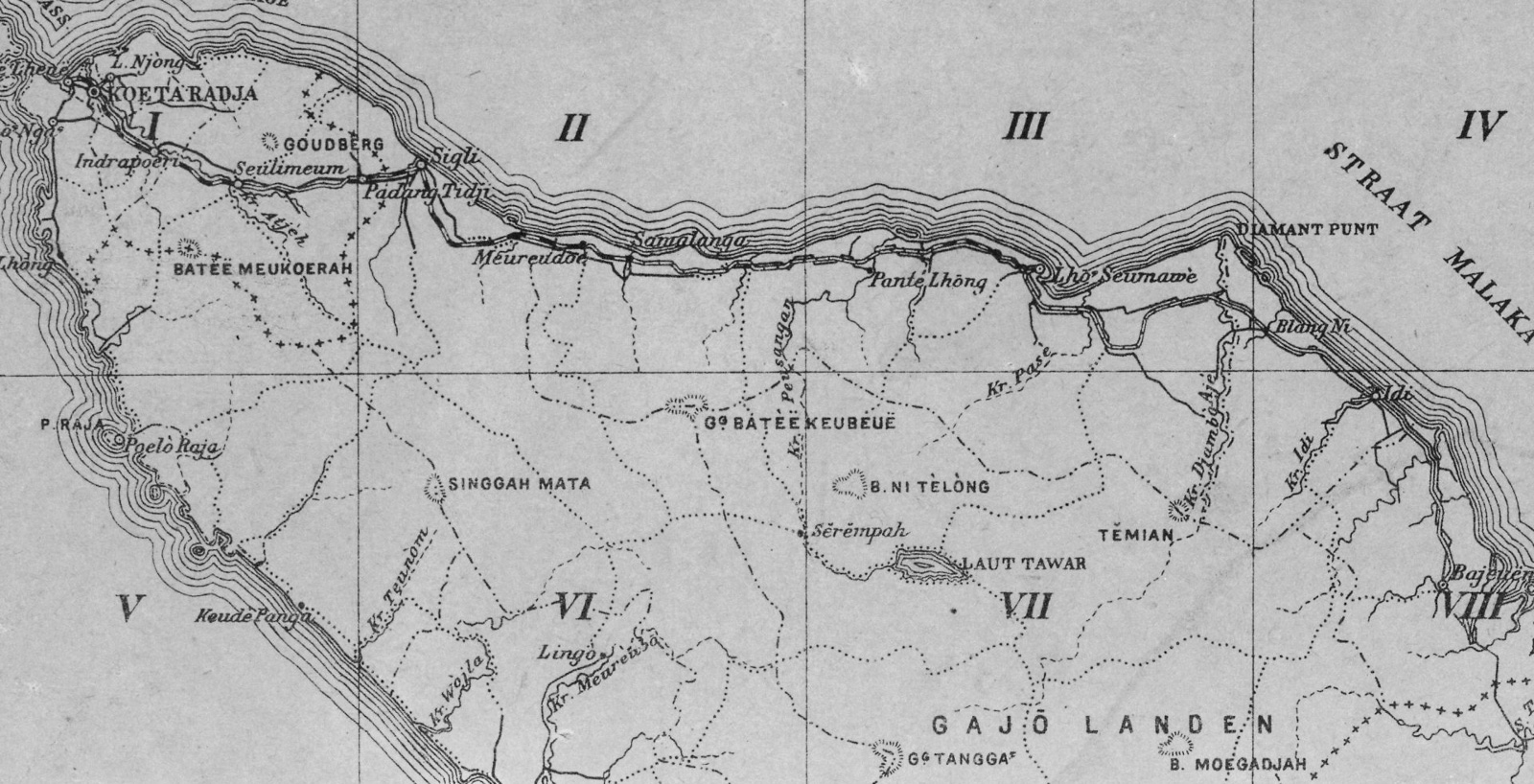
In 1897 a change in policy resulted in the military switching from a defensive strategy to an offensive strategy. Much of the land they wanted to go through on the way to Segli was in rebel hands so several companies of troops were required to protect the workers and to capture or kill the rebels. Once again the military effectively took control of the railway for their own purposes but continued to allow its use in a public capacity where possible. The line from Ketapang Doea to Lambaroe and the Lam Reng to Lam Tehoe line were dismantled, to be reused on a new section southwards to Gle Kambing. This would become an extension of the line from Olehleh (Km 0) to Lambaroe (Km 12). Work started in June 1897 via Samahani (Km 21), which had already been occupied in August 1896, and the 15 Km line to Gle Kambing (Km 27) was opened to the public on 15th November 1897. By this time a ninth 2-4-0T had arrived from Hanomag.
January 1898 saw the start of a further 18km section to Seulimeum (Km 45) which opened on 1st November 1898. This section was quite hilly requiring a lot of earthworks and major bridges, and a gradient of 1.5% which proved a bit too much for the 2-4-0T locomotives so two 0-6-0T locomotives were ordered and delivered from Hanomag in 1898.
Before the next section could be built the Dutch army had to deal with a large number of rebels encountered when they marched from Segli to Padang Tidji to protect the engineers sent to survey the mountain section between there and Seulimeum. The next section was thus started in 1898 from Segli (Km 93) through Padang Tidji (Km 80) to Keude Breueh (Km 75), reached in 1899. The Dutch Government then decided that it was highly desirable to build the coastal line from Segli to Tamiang, some 350 kms to the south-east in order to provide sufficient personnel and equipment for the pacification of the region. Work was thus temporarily stopped on the mountain section until funding became available. In mid 1901 the remaining belt line between Lambaroe and the military depot was lifted, leaving just a 45km isolated line with just a few short branches.
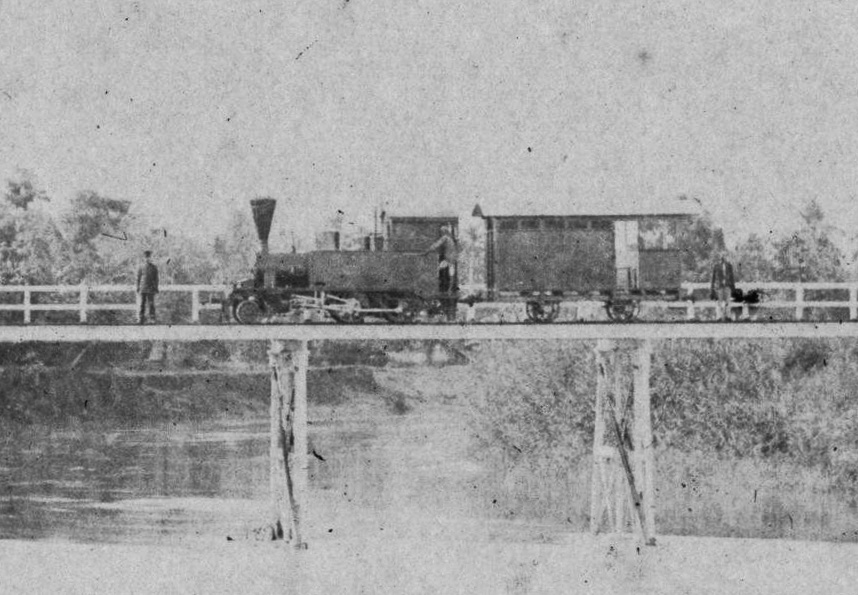
2-4-0T on a bridge near Lambaroe.
Atjeh Tramway (southern section) 1900-1907
The 1900 budget provided funding for the section between Segli (Km 93) and Lho Seumaweh (Km 251) and work started at both ends while hostilities continued in the middle of this section. The section between Segli (Km 93) and Meureudoe (Km 139) was officially opened on 20th November 1901 and by the end of February 1902 works trains were running as far as Keude Djanka Boeja (Km 148). In the southern section things were not so smooth with bandits and flooding causing damage to bridges so it was not possible to run trains through the entire section until 1904. A branch line about 6 Kms long was built from Beureunoem (Km 106) to Lam Meulo in to serve a large military camp which was set up in 1906.Two opening dates have been given for this, being officially 15th June 1906 but the Deli Courant of 5th February 1913 states the line was opened in early 1913. It is possible that prior to that date it was used for military purposes only and in 1913 it was opened for public use. The picture below show an 0-6-0TT locomotive with auxiliary tender with the train used for the opening ceremony.
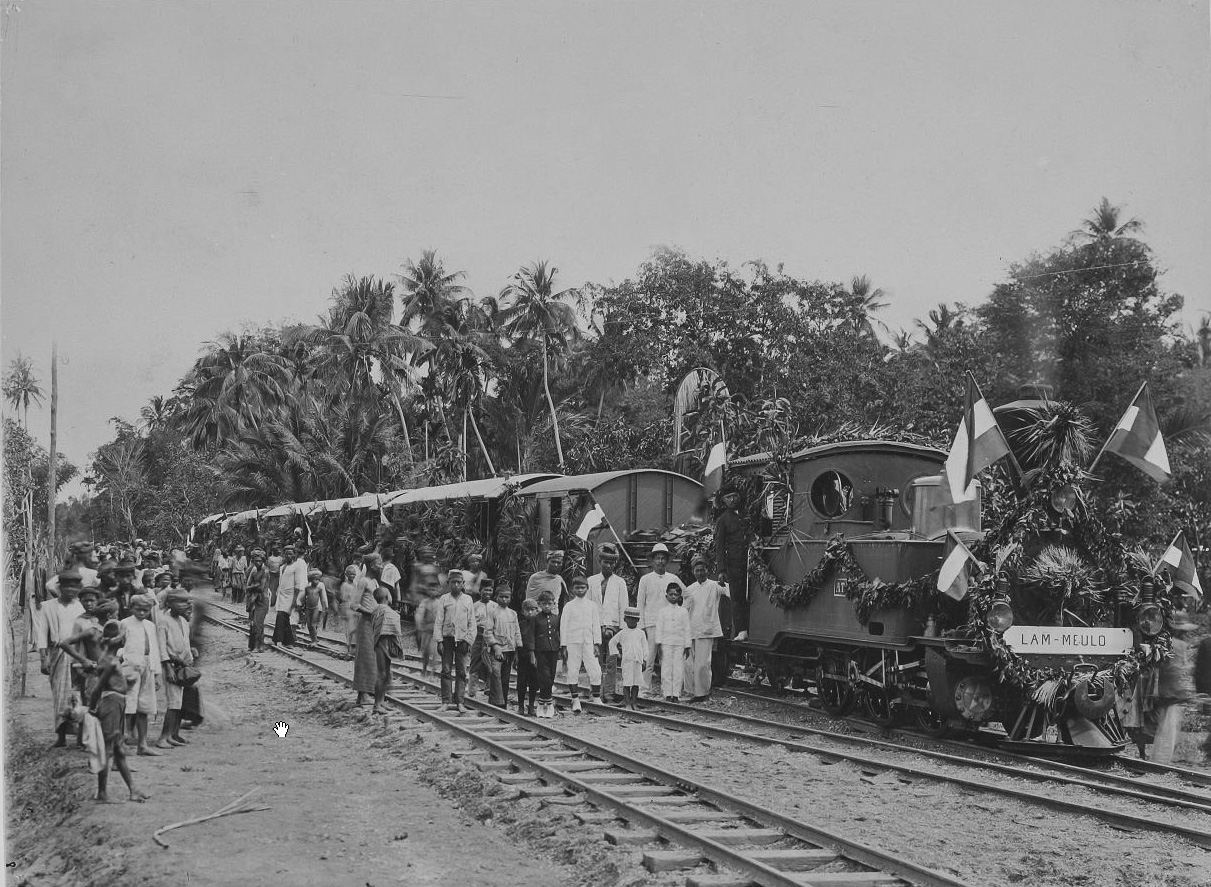
The 1901 budget provided funds for the section from Lho Seumaweh (Km 251) to Edi (km 349) and this was opened on 1st April 1904. Work was also proceeding towards Langsa (Km 413) by this time and this was completed towards the end of 1907.
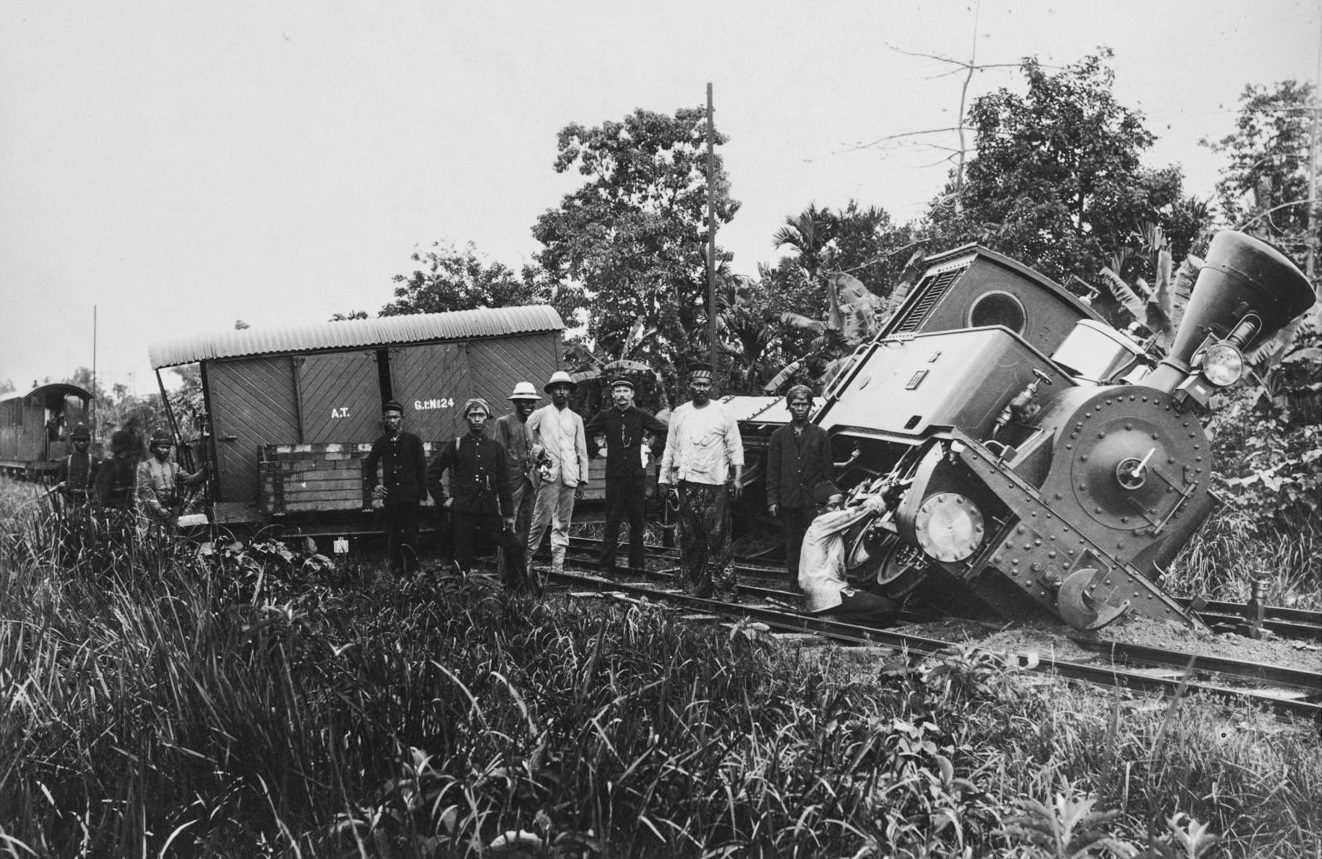
0-6-0T 16 has come to grief near Samalanga
Atjeh Tramway (mountain section) 1903-1908
In November 1903 construction was started from both ends and in the length of just 30 Kms there were to be 1,555 metres of bridges and viaducts. The first official train ran through between Kotaradja and Segli on 1st March 1908. During this period a large number of new locomotives were ordered. A tenth 2-4-0T came from Hanomag and an 11th was built locally at Koetaradja workshops, several small batches of 0-6-0T locomotives were ordered from both Hanomag (27) and Werkspoor (15) as was a batch of six 0-4-4-0T Mallets from Esslingen, presumably for the mountain section. This gave a total of 59 locomotives built by 1904. Once the new connection became established a new workshops, locomotive depot and carriage shops were established at Segli and the workshops at Koetaradja were closed. Sigli later produced a 12th 2-4-0T. At least some of the 0-6-0T locomotives had matching tenders, whether these were supplied new with the locomotives or later I do not know. The Mallets were soon rebuilt to 0-4-4-2T with extended cab and bunker and one of these appeared in an early photograph which has been dated 1910.
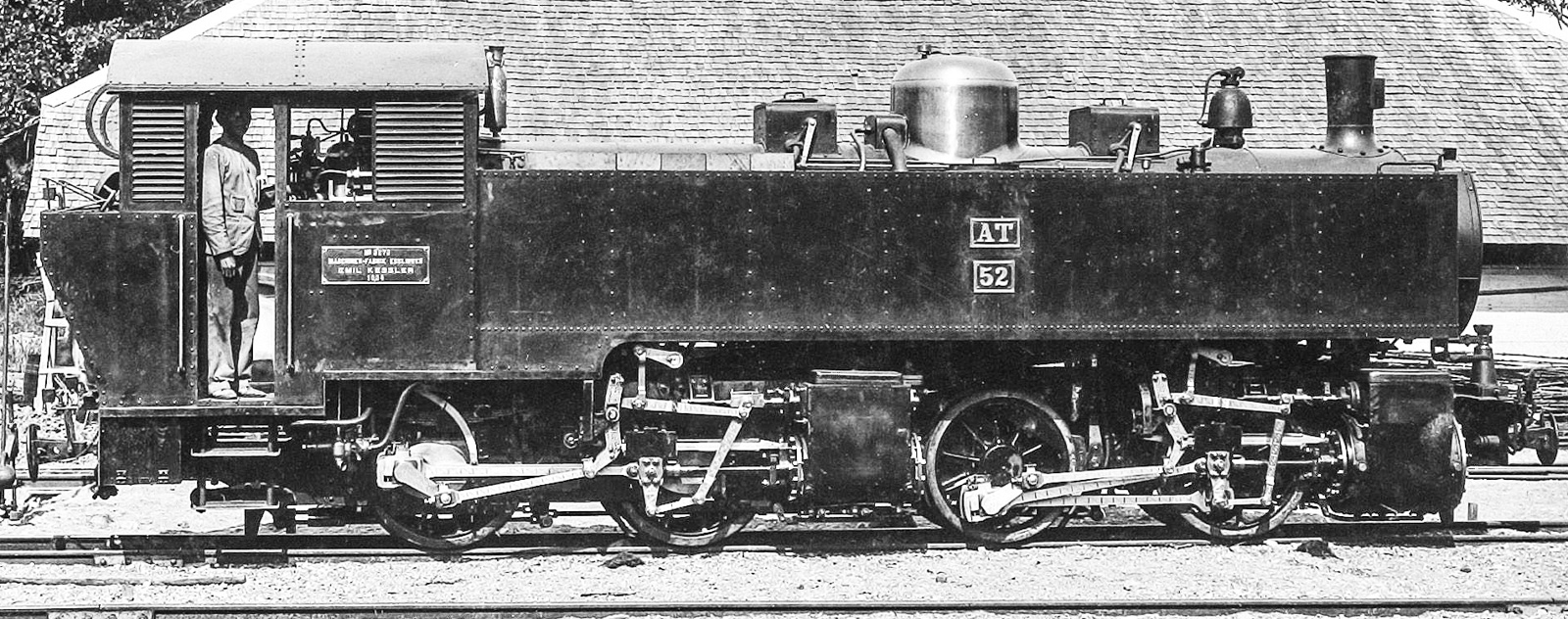
Above: AT 52 in as built condition as an 0-4-4-0T.
Below: A rebuilt 0-4-4-2T on a bridge in the mountains.
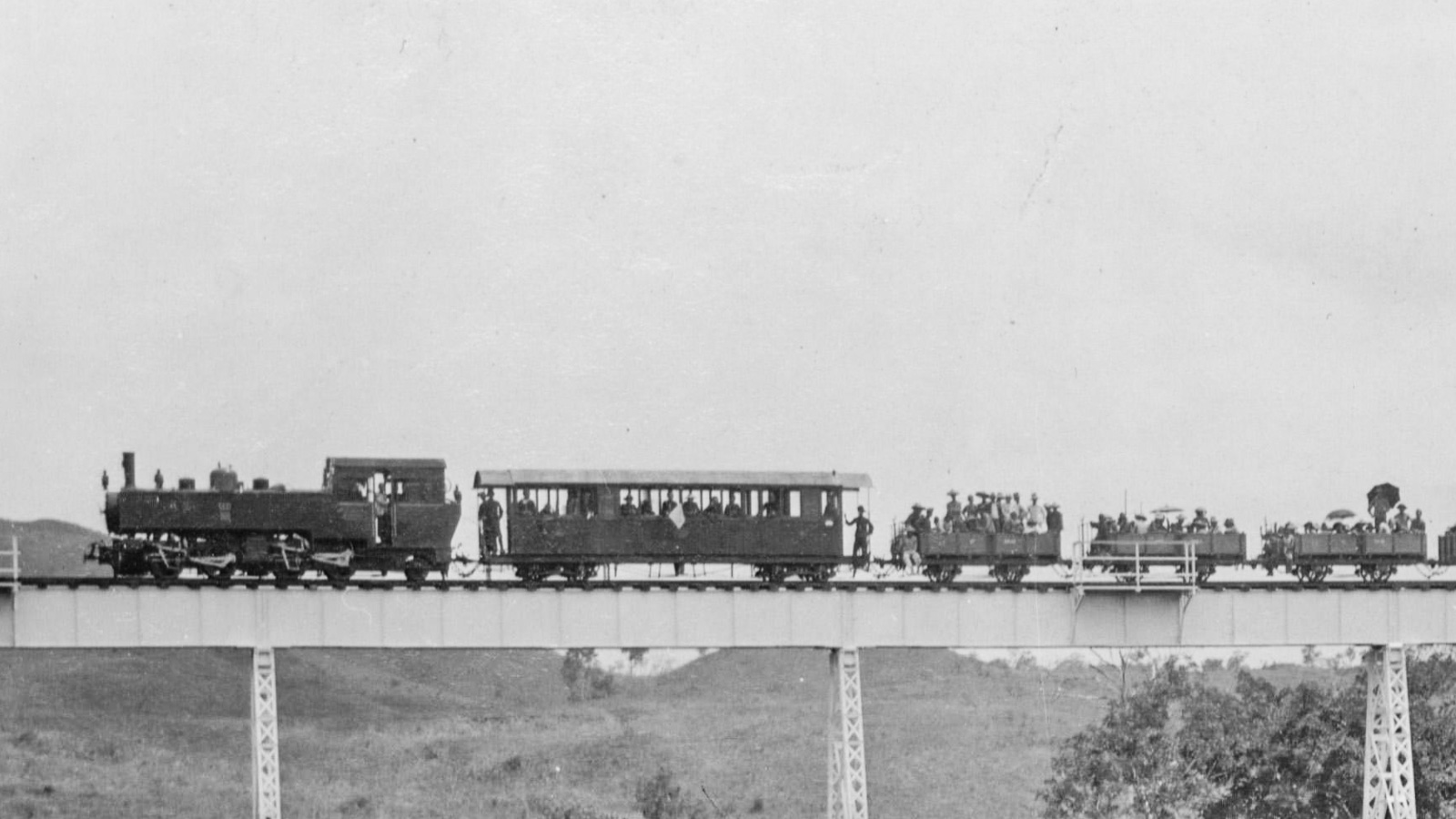
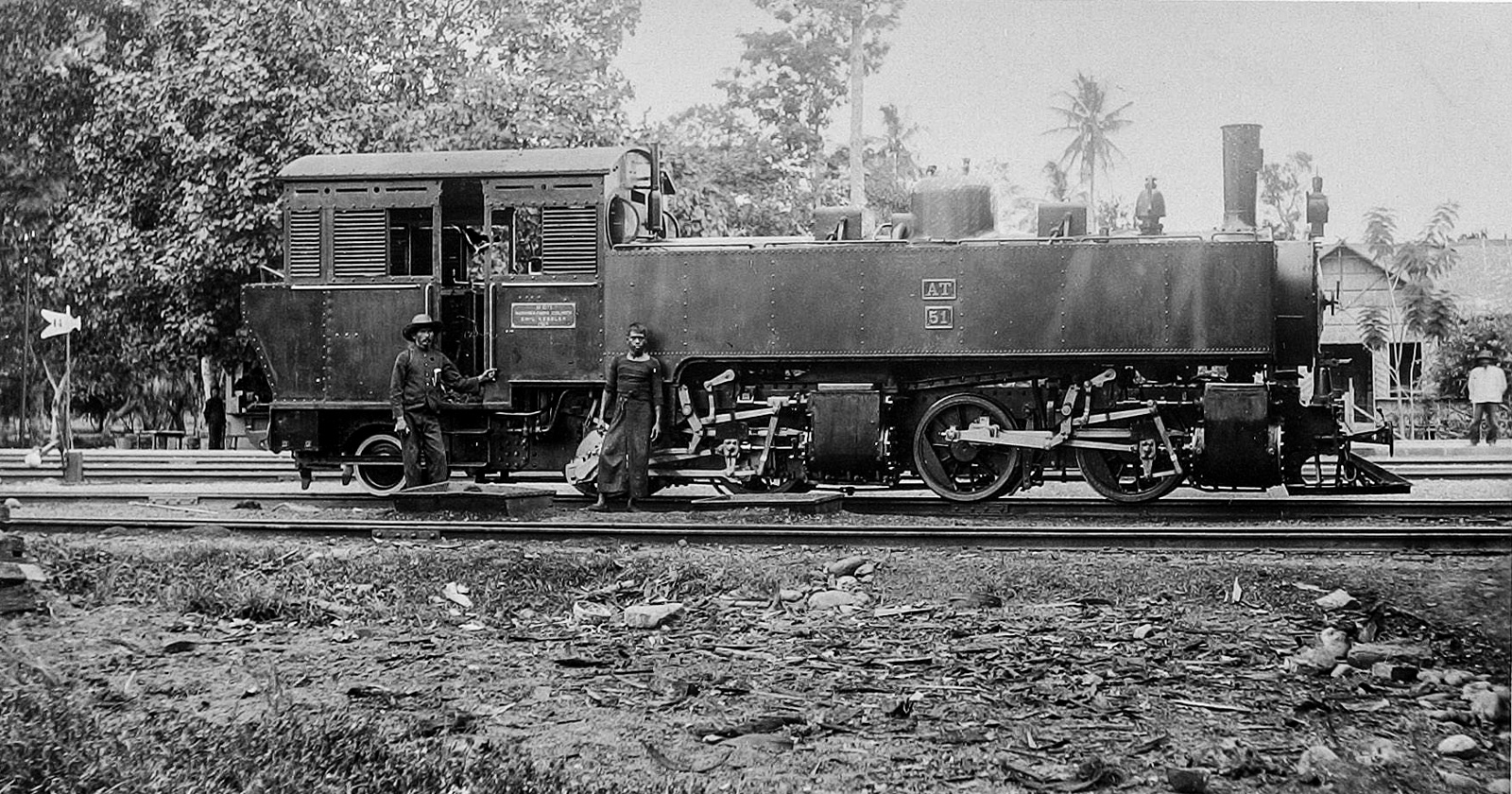
Above: AT 51 as rebuilt to an 0-4-4-2T.
Below: AT 54 as rebuilt to 0-4-4-2TT with an auxiliary tender.
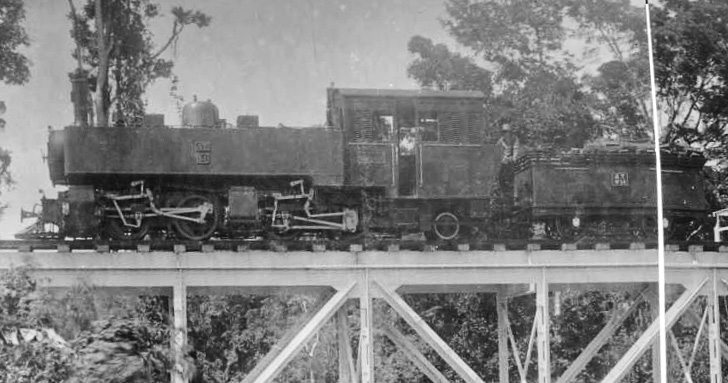
Atjeh Tramway completion 1910-1917
After a 2-year pause in construction funds became available to continue and the section to Kuala Simpang, before the bridge over the Tamiang River, was opened to the public on 2nd September 1912. The 228 metre long bridge was completed on 31st December 1913 allowing access to Kuala Simpang (Km 445). In 1914 the line had reached Sungei Lipoet and By the 1st February 1916 had reached Besitang (Km 486). The line from Besitang used the same alignment as the existing Deli Railway by creating a dual gauge "siding" to Pangkalan Susu (Km 495) in 1917, this being a port on the Aru Bay.
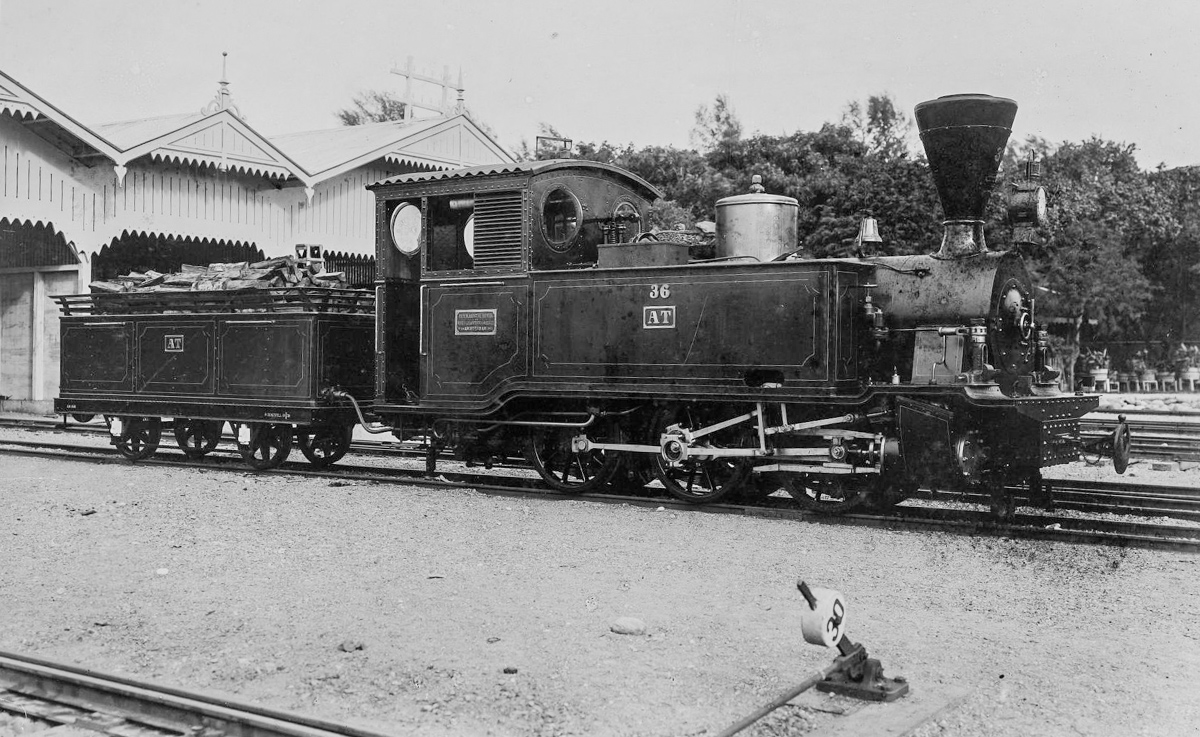
Above: AT 36 0-6-0TT with auxiliary tender. Presumably these were added for the longer journeys.
Below: AT 11, an 0-6-0T delivered in 1898.
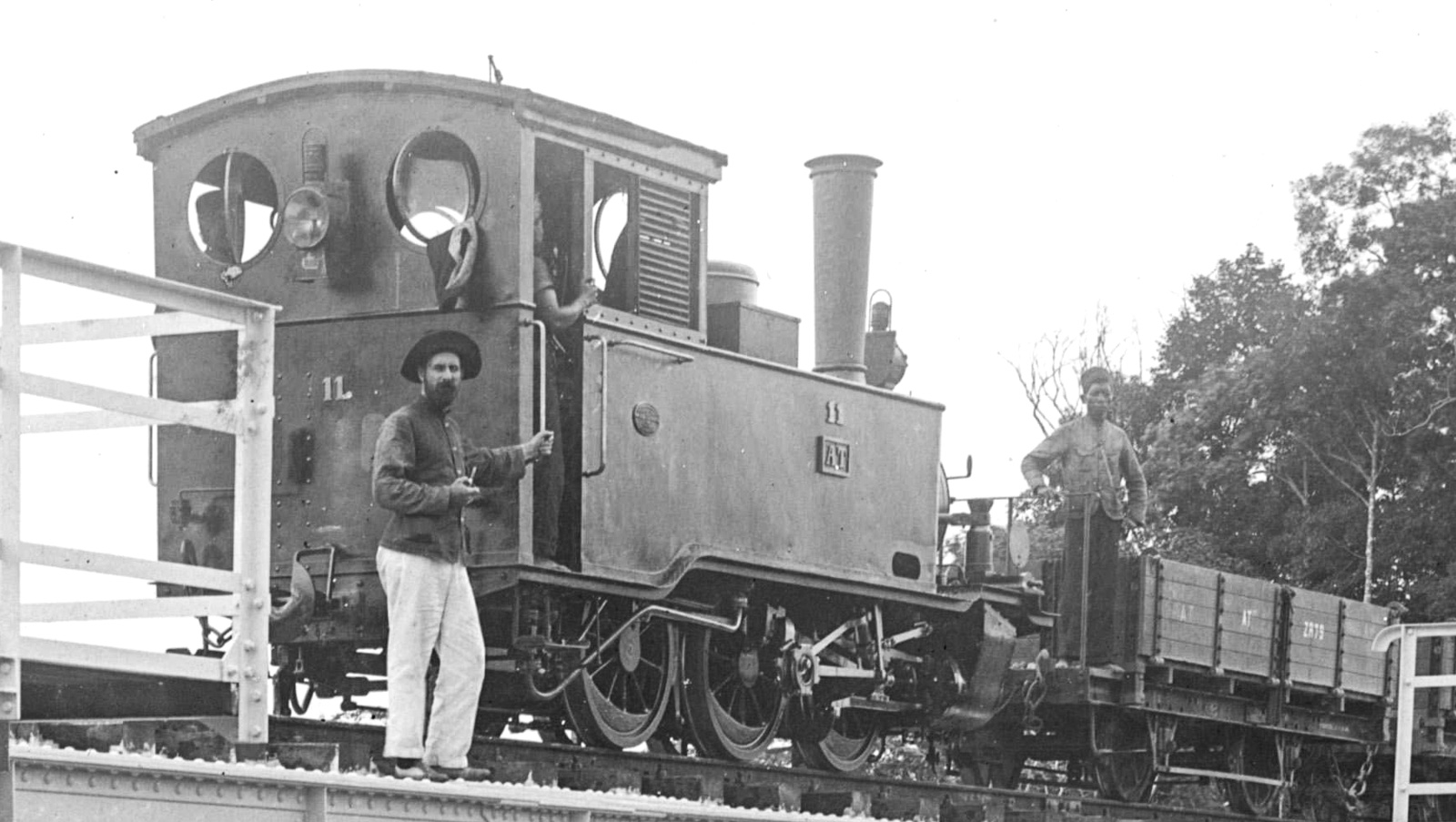
Aceh State Railways (ASD) 1916-1942
With the Civilian authorities once again taking over the railways the name was changed again, as above. There was also an alternate name Asai Sampai Sadja (ASS). Total length including sidings (branches) was 511 Kms. In 1922 Werkspoor supplied two4-6-0 locomotives and these were followed in 1930/31 by 12 2-8-0 locomotives, 6 each from Ducroo & Brauns and Hanomag.
Locomotive data
|
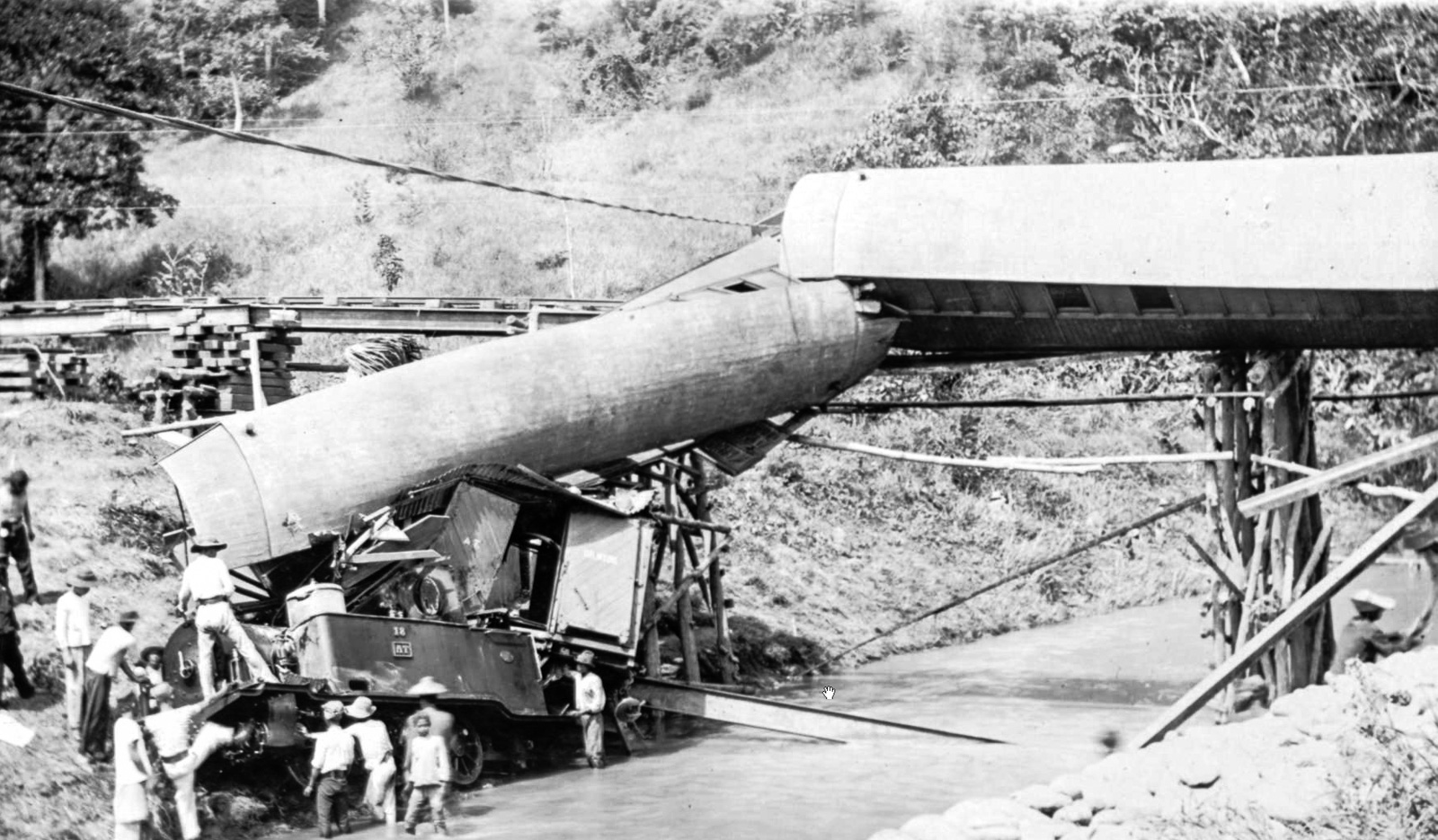
Above: 0-6-0T AT 18 has come to grief on a bridge.
Below: a 2-4-0T crossing Demmenie bridge with a passenger train.
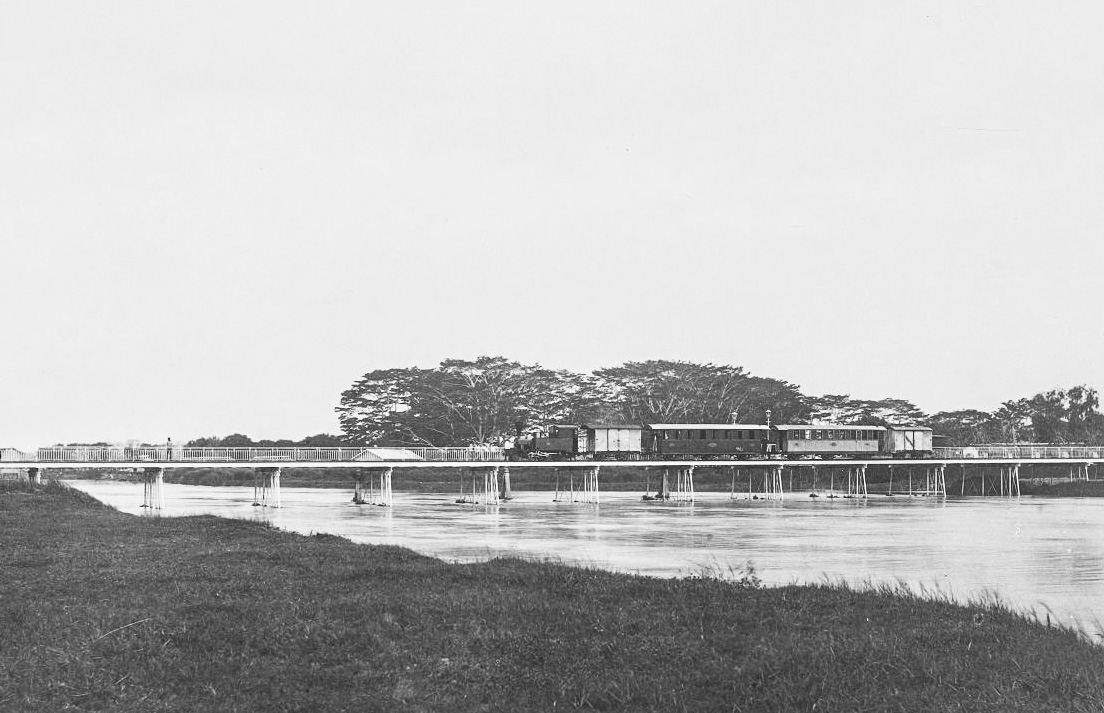
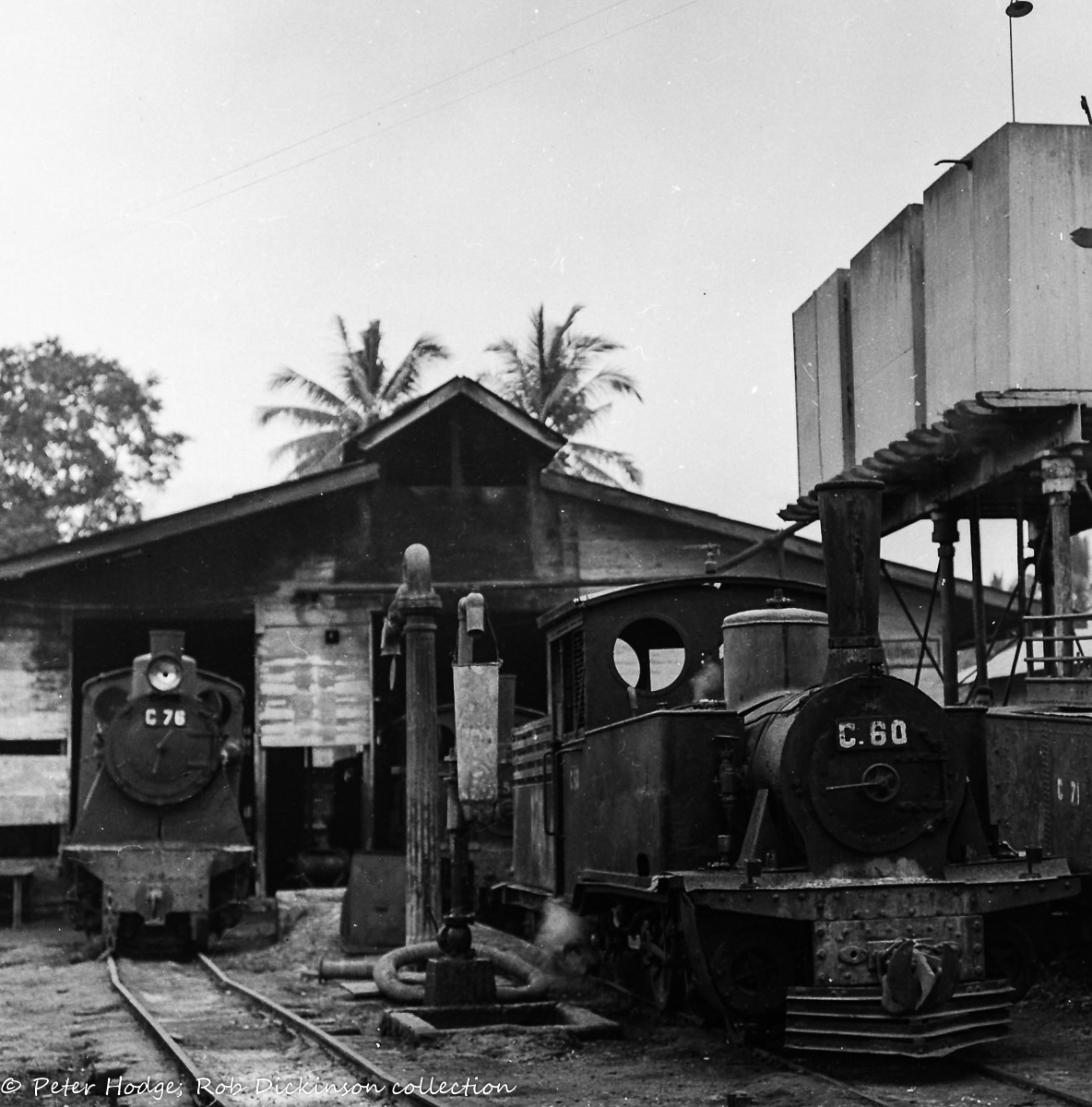
Above: 0-6-0T C.60 at Langsa in September 1971 appears to be in steam and to have an auxiliary tender attached, which was common practice in earlier days, see picture of AT 36 above.
There are several more locomotives visible in the shed behind it.
Below: 2-6-0 C 76 at Langsa in September 1971.
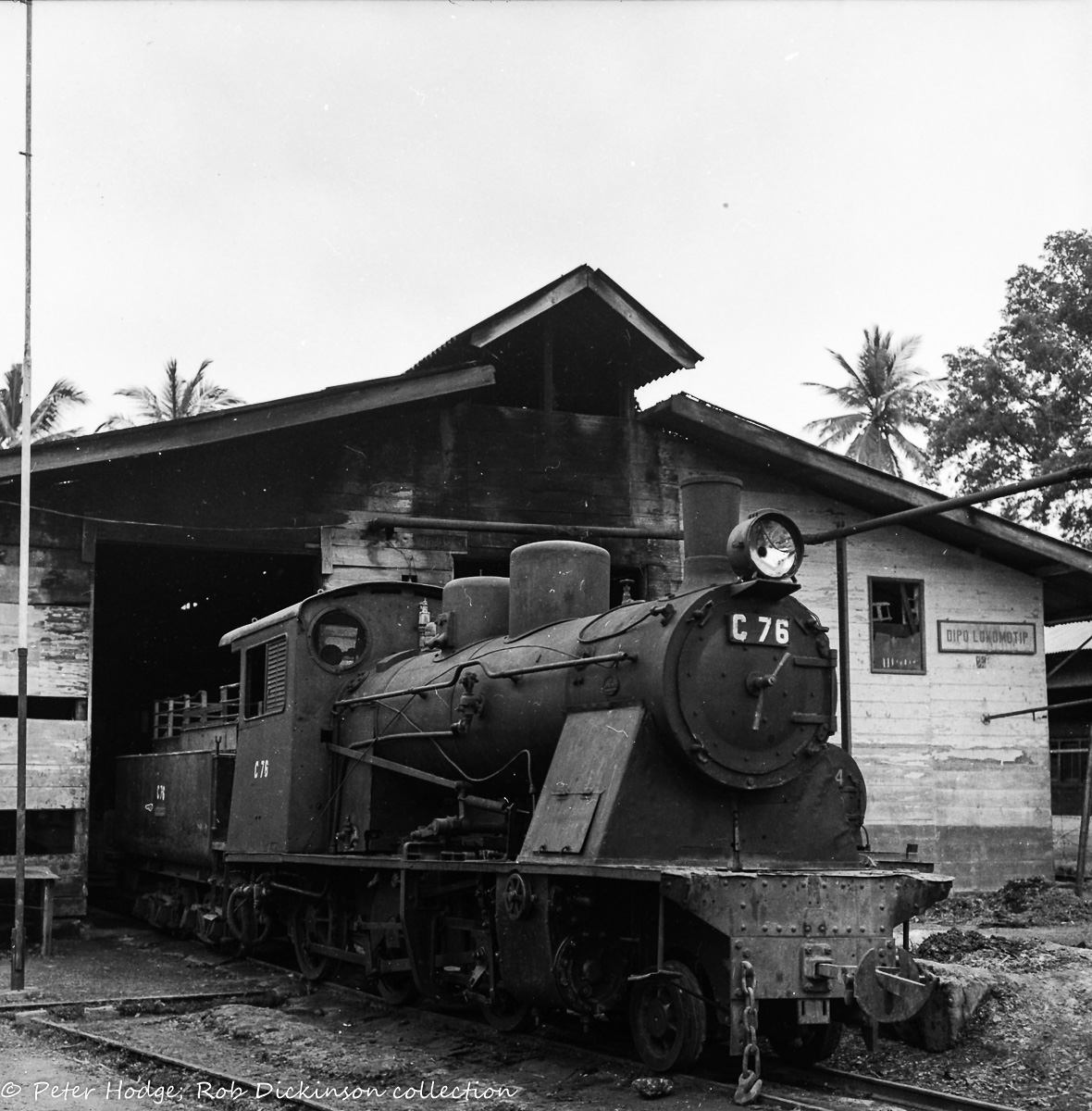
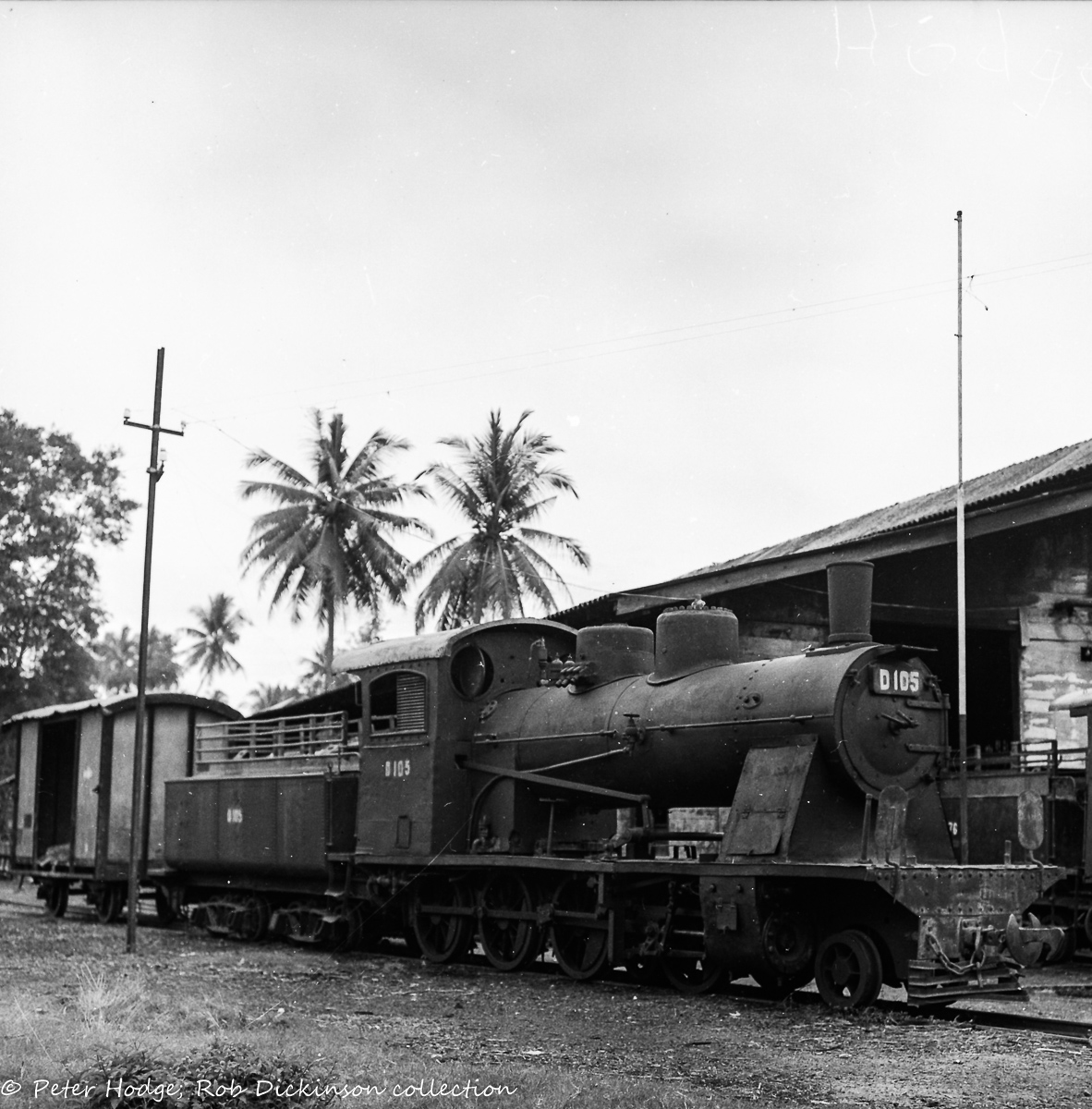
Above: 2-8-0 D105 at Langsa depot in September 1971. At this time the only section of line left open was that between Langsa and Kuala Langsa.
The above 3 pictures are posted with permission from Rob Dickinson, custodian of the Peter Hodge collection.
Created 5th January 2016.
Updated
24th November 2019.
You are visitor number
to this page.